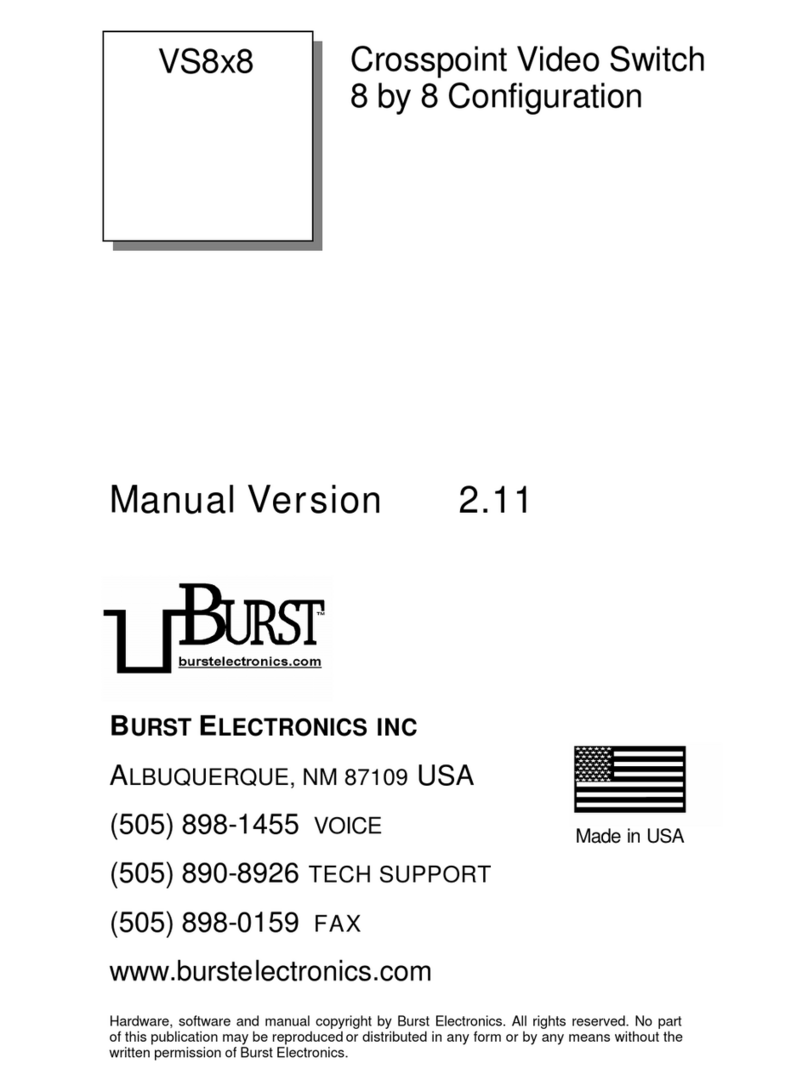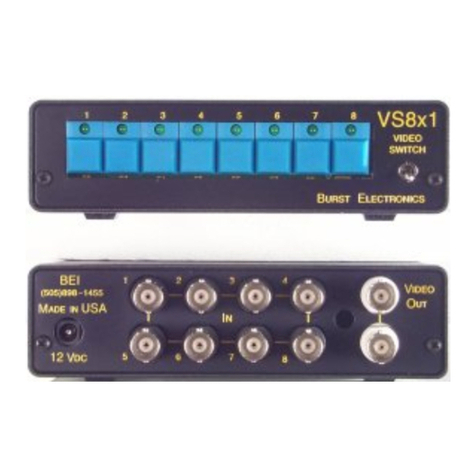
panel thumbwheel switch corresponding to the
specific output channel. Setting the thumbwheel
switch to the values of 1 through 8 will connect that
audio input to the specified output. Setting the
thumbwheel switch to a value of 0 or 9 will turn off the
output. When the unit detects a change on the front
panel thumbwheel switches, it will switch
immediately. In this mode the front panel SET LED is
always on, indicating that the audio outputs are
always corresponding with the thumbwheel settings.
Mode 2 (Triggered Manual Mode)
This mode is similar to the Scanned Manual Mode,
with one exception. When a change is detected, the
system will turn off the "SET" LED to indicate a
disparity between the thumbwheel switches, and the
actual audio signal routing. The unit then waits for the
operator to initiate the new selection by pressing the
front panel "LOAD" button. This mode prevents
erratic audio outputs caused by scrolling the
thumbwheel switches through the selections. Once
the "LOAD" button is pressed, the unit then sets the
new selection and then reactivates the "SET" LED to
indicate that the new selection has been activated.
Mode 3 (Single Unit Remote Mode)
In this mode, the unit is controlled exclusively by the
serial RS232 interface. Routing of the audio signals is
accomplished by using a host computer to transmit
simple commands to set the audio outputs. The
following is a list of the commands used by the
AS8x8. Each command must be terminated by a
carriage return (hex 0D). All characters that are
transmitted to the unit are echoed back to the host
AS8x8 Audio Routing Switch 6






























